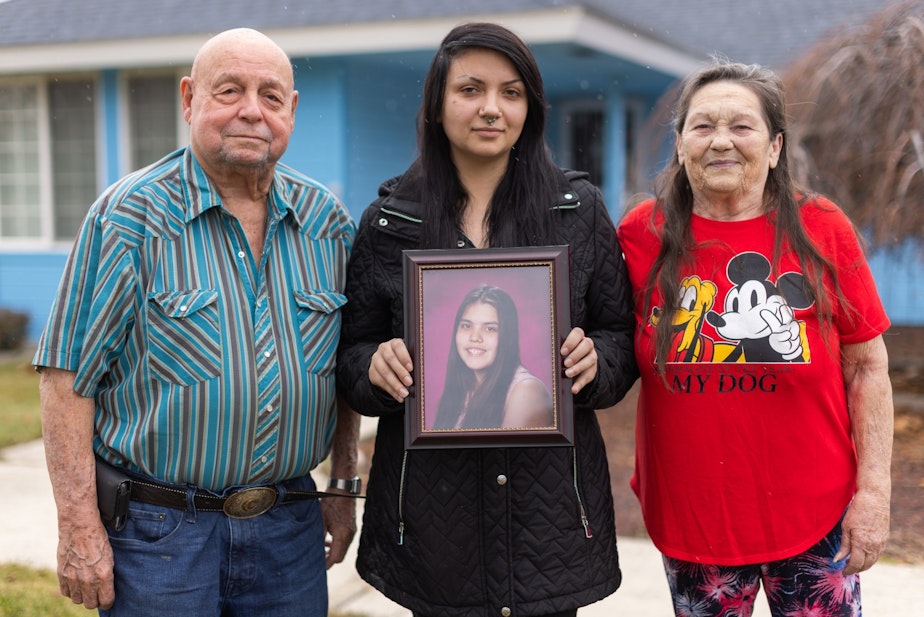Why did it take over a year for police to investigate a missing child case?

For marginalized communities, especially ones with whom trust has been broken for so long, it’s easier for people to slip through the cracks. Often the safety nets that are meant to protect them don’t activate properly.
In a new story from InvestigateWest's Kelsey Turner, those safeguards missed an Indigenous teenager named Kit Nelson-Mora.
RELATED: An Indigenous teen in Washington disappeared. It took police more than a year to start investigating
Washington state has one of the highest number of cases of missing and murdered Indigenous people in the country, according to the Urban Indian Health Institute.
State and federal officials have been trying to combat that trend. Washington has even created the first Missing Indigenous Person’s alert system.
Sponsored
But, as Turner reports, those systems and safety nets are only as useful as the people who uphold them.
Kit disappeared after moving to Omak, to spend time with their mom.
Kit's mother, Lorie Sue Nelson, lost custody of Kit due to issues of domestic violence in the home when Kit was 3. They had lived with their great grandparents in Yakima since.
The move to Omak was meant to be just for a summer, but Turner says Nelson kept asking Kit to stay longer.
"It seems basically to Kit's friends and family that Nelson wanted Kit there as a free babysitter more or less," Turner says. "Nelson has four very young children."
Sponsored
The last time Kit's friends and family heard from them was in November 2021. After that, Kit dropped off social media and stopped texting, all of which, friends and family say, were uncommon for the teen.
Nelson, Kit's mother, says Kit ran away with a boyfriend or girlfriend. Friends say that's unlikely, because Kit was asexual and aromantic, which means they don't experience sexual or romantic desire.
Turner says there are multiple systems that failed Kit.
Child Protective Services and the police had been called dozens of times about Lorie Sue Nelson, over alleged mistreatment of several very young children. But when Kit's sister called asking for a wellness check on Kit, they say that the police didn't confirm that the person who answered actually was Kit.
When Child Protective Services came to check on Kit's siblings, and ultimately to remove them from the home, Kit wasn't present. But no one reported them as missing.
Sponsored
And when Kit stopped going to school, the Omak School District dropped them from the school’s enrollment, instead of filing a truancy petition and referring Kit to a community engagement board as they are legally require to do.
RELATED: Washington state wants school districts to keep better track of truant students
"One issue that comes up a lot in the missing and murdered Indigenous people's crisis is jurisdiction confusion," Turner says. "And that seems to have played a role here as well. The Colville Tribes have their own child protective services. And Washington state has Child Protective Services."
Both also have their own police department. Kit lived in Omak, but also within the boundaries of the Colville Reservation.
"It takes a village to raise a child, but it also takes a village to lose a child. And that's what seemed to happen in this case," Turner says.
Sponsored
Omak's police department is still looking for Kit, as are their friends and family. Right now, Turner says, they're waiting for tips to investigate.
Listen to the full conversation with Kelsey Turner and Libby Denkmann by hitting the "play" button above.





